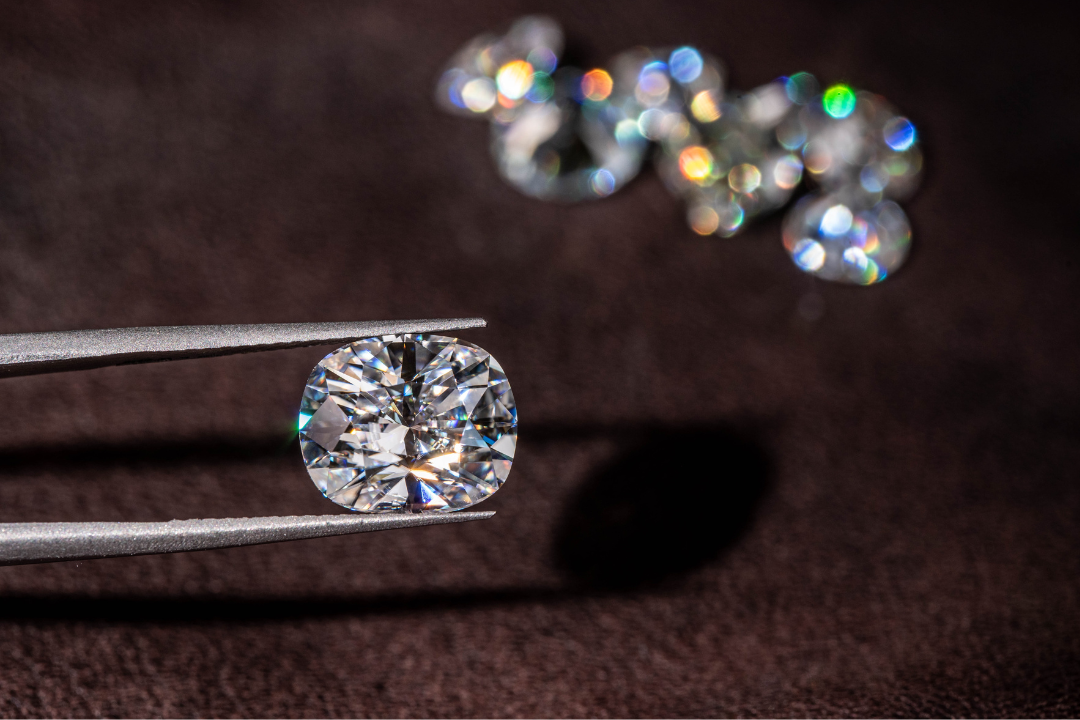Lab diamonds, also known as man-made diamonds, have become a popular choice for consumers seeking sustainable and affordable alternatives to mined diamonds. One of the most important factors when considering lab diamonds is understanding the lab diamonds 4Cs, Clarity, and Carat weight. These four characteristics play a crucial role in determining the overall quality and value of a diamond, whether it is natural or lab-grown. In this article, we’ll explore how the 4Cs apply to lab diamonds and why they matter in making an informed purchase.
Table of Contents
What Are Lab Diamonds?
Lab diamonds are diamonds that are created in a controlled laboratory environment using advanced technology, replicating the natural process of diamond formation. These diamonds share the same physical and chemical properties as mined diamonds, making them virtually indistinguishable to the naked eye. The key advantage of lab diamonds is that they are more affordable than natural diamonds and have a significantly lower environmental impact. Understanding the 4Cs of lab diamonds is essential to ensure you select the best quality diamond for your needs.
The 4Cs of Lab Diamonds
The 4Cs—Cut, Color, Clarity, and Carat—are the universal grading standards used to evaluate all diamonds, whether they are natural or man-made. These factors determine the diamond’s appearance, brilliance, and overall value. Let’s take a closer look at each of these characteristics in relation to lab diamonds.
Cut: The Most Important C for Lab Diamonds
When it comes to lab diamonds, the Cut is the most important factor influencing the diamond’s overall appearance. The Cut refers to how well a diamond has been shaped and faceted to reflect light. A well-cut lab diamond will display maximum brilliance and sparkle. A diamond’s Cut is graded from Excellent to Poor, with the highest grades corresponding to diamonds that are perfectly proportioned, with symmetrical facets that allow light to enter and reflect properly.
For lab diamonds, the Cut plays an even more significant role than the Color or Clarity, as it directly impacts how the diamond interacts with light. While lab diamonds can often achieve higher grades in Cut compared to mined man made diamonds, it’s important to consider how the diamond’s Cut enhances its visual appeal.
Color: The Beauty of Lab Diamonds
The Color of a lab diamond is another important factor to consider. Lab diamonds, like mined diamonds, are graded on a scale from D (colorless) to Z (light yellow or brown). The less color a diamond has, the higher its grade. Colorless lab diamonds (graded D-F) are the most valuable, while diamonds with slight traces of color (graded G-J) can offer great value without compromising too much on appearance.
Because lab diamonds are created in a controlled environment, they often achieve higher color grades than mined diamonds. However, some consumers may choose diamonds with a slight hue for personal preference or cost savings. The key is to balance color with the other 3Cs when selecting the perfect lab diamond.
Clarity: A Clear Choice for Lab Diamonds
Clarity refers to the presence of internal or external imperfections, known as inclusions and blemishes, in a diamond. Lab diamonds are created with precision, often resulting in higher clarity grades compared to natural diamonds. Lab-grown diamonds can be found in various clarity grades, ranging from Flawless (no imperfections visible under 10x magnification) to Included (with visible imperfections).
The clarity of a lab diamond is an important factor in its overall appearance. Inclusions can affect the diamond’s brilliance, but since lab diamonds are typically produced in ideal conditions, they tend to be clearer than natural diamonds. It’s important to keep in mind that even diamonds with minor inclusions can look stunning to the naked eye, so you don’t need to prioritize perfect clarity unless it’s important for you.
Carat Weight: Size Matters for Lab Diamonds
Carat weight refers to the size of the diamond. One carat is equivalent to 0.2 grams, and the more carats a diamond has, the larger and more valuable it is. For lab diamonds, the carat weight is just as important as for mined diamonds, and it is a significant factor in determining price.
However, because lab diamonds are generally less expensive than mined diamonds, you can often afford a larger carat weight within your budget. When purchasing a lab diamond, it’s essential to balance carat weight with the other 3Cs—Cut, Color, and Clarity—to achieve the best combination of beauty and value.
Why Lab Diamonds Are a Smart Choice
Lab diamonds are a smart choice for many consumers due to their ethical and environmental benefits. Unlike mined diamonds, which can have a significant environmental and social impact, lab diamonds are produced with minimal ecological disruption. Additionally, they are often priced 20-40% lower than natural diamonds, making them an affordable option for those seeking a high-quality diamond without the hefty price tag.
Furthermore, lab diamonds offer a greater degree of transparency in the production process, ensuring that the diamonds are conflict-free and ethically sourced. When choosing a lab diamond, it’s essential to understand the 4Cs and how they influence the overall quality, beauty, and value of the diamond.
Conclusion: Choosing the Perfect Lab Diamond
In conclusion, understanding the 4Cs—Cut, Color, Clarity, and Carat weight—is crucial when purchasing a lab diamond. These factors will help you select the best diamond that fits your preferences and budget. Lab diamonds, or man-made diamonds, offer a sustainable, ethical, and affordable alternative to mined diamonds, while still providing the same beauty and durability. By focusing on the 4Cs, you can make an informed decision and find the perfect lab diamond for any occasion.




